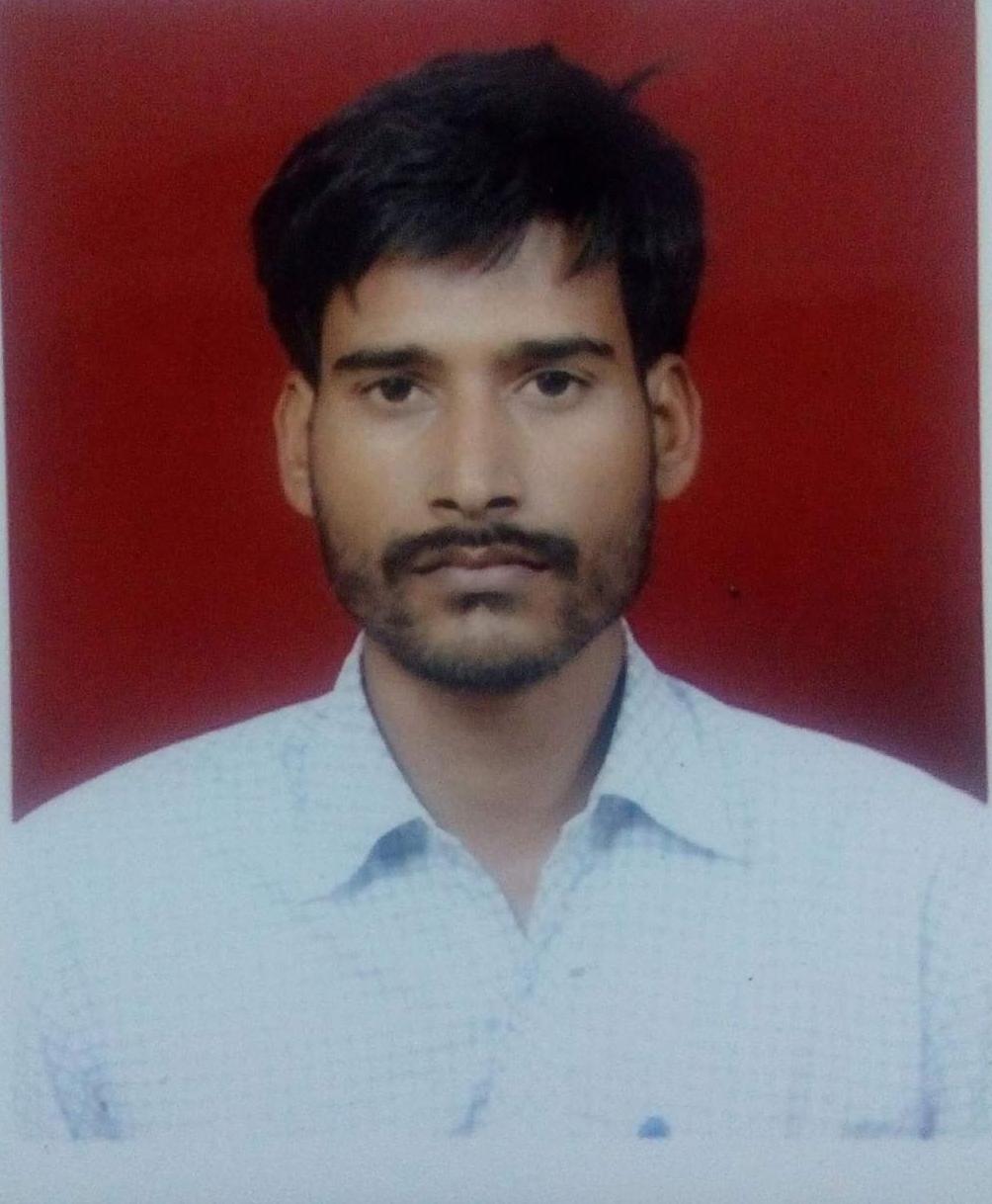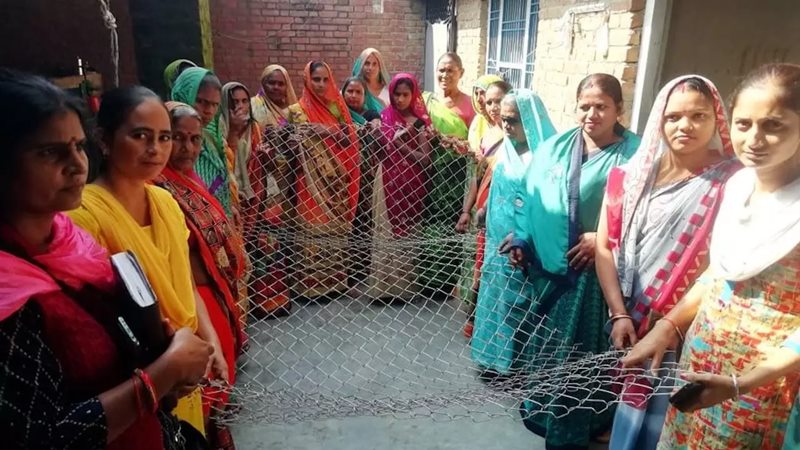Building fences: Women in Bareilly make wire and metal netting to protect farmlands from stray cattle, and earn a living
In Uttar Pradesh, 560,408 women self-help groups across the state’s 75 districts have helped rural women into self employment and economic independence. In Bareilly district, women associated with more than 7,000 SHGs are making barbed wire fences to masalas, growing their business and becoming self-reliant.

Bareilly, Uttar Pradesh
Outside a house in the corner of a road in Bhagwatipur village is a banner that reads – Vishram Prerna Mahila Gram Sangathan. Step inside, and there are bundles of netting and wires stacked neatly while a group of women stand around a piece of machinery, working, making more of those wires and metal netting.
In the Bhagwatipur gram panchayat in Bareilly district of Uttar Pradesh, there are miles of barbed wire and metal netting that protect agricultural lands from stray cattle, and they are all made right here by the women of this self-help group.
Stray cattle is a growing problem in the poll-bound state where every season farmers lose their standing harvest to the chhutta pashu (stray cattle). While the population of stray cattle in the rest of the country has reduced by 3.2 per cent between 2012 and 2019, their numbers have registered a 17.34 per cent increase in Uttar Pradesh.
Also Read: Holy cow? Not for the UP farmer, who now spends nights protecting crops against stray cattle attacks
It was in 2019, that 26-year-old Sangeeta Devi formed the self help group (SHG) in Bhagwatipur village and began this work on barbed wires along with a few more women in her village. Now, farmers from across Bareilly and neighbouring districts buy the wire and netting from them to fence their fields and protect their crops from the stray cattle.
“I learnt how to make these [barbed wire and metal netting] in Chennai when I lived there. On coming to Bareilly, I formed the self help group and trained women in the job too,” Sangeeta Devi told Gaon Connection. “We earn about three and a half lakh rupees a year,” she added.

According to Sangeeta, the earnings of their group grow in the sowing season when hundreds of wheat and paddy farmers in the area need fencing for their land.
The National Rural Livelihoods Mission (NRLM) has enabled many such SHGs to be set up and that has helped many women into self employment and economic independence.
According to data from NRLM, in Uttar Pradesh, there are 560,408 SHGs across the state’s 75 districts. In Bareilly district alone, there are more than 7,000 SHGs across its 15 blocks.
Also Read: Self help groups in Uttar Pradesh learn to use the mobile phone as marketing tool
On December 21, 2021, Prime Minister Narendra Modi, in an address in Prayagraj, Uttar Pradesh to women coming under the Deendayal Antyodaya Yojana-National Rural Livelihoods Mission said that he considered the role of women in the Atma Nirbhar Bharat Abhiyan as invaluable. And women were contributing to an increase in income in families in rural India.
“I work for about four hours a day making barbed wire and metal netting and earn about ten thousand rupees a month,” Preeti Kumari, who is part of the Vishram Prerna Mahila Gram Sangathan, told Gaon Connection.
Generating incomes, securing livelihoods
While in Bhagwatipur the SHGs make fencing, in other villages women prepare organic compost, do tailoring, make candles, sell vegetables, make masalas, or are engaged in beekeeping.
In Giridharipur village in Bithri Chainpur block, women of the Adarsh Lakshmi Swayam Sahayata Samuh (SHG), prepare vermicompost and natural fertilisers with the cow dung as most of them have cows at home. This earns them an income.
“A packet of vermicompost weighs a kilogramme and can sell at anything up to twenty five rupees each. In a day we manage to sell about six packets,” Madhu, a member of the SHG, told Gaon Connection. Besides vermicompost, several women are engaged in apiculture.
“The SHGs provide a platform for the women to become independent earners and there has been a marked changed in their economic state,” Sanjay Dwivedi, assistant development officer of the co-operative in Bithri Chainpur, who also discharges the duties of the Block Development Officer, told Gaon Connection.

Also Read: Rural women in Shahjahanpur are turning their lives around, one straw at a time
According to Tejwant Singh, deputy commissioner, NRLM, Bareilly, women are encouraged to become self-reliant in the district. “From manufacturing wire and net fencing and tailoring clothes to preparing vermicompost and masalas, the women in the SHGs are engaged in a range of activities,” Singh told Gaon Connection.
“Some of the products they make are even being exported. The women have not just liberated themselves from a life of poverty and want, but have also contributed to nation building,” the deputy commissioner added.
Stitching up a secure future
Taking advantage of the fact that many rural women are adept at embroidery, sewing and knitting, several initiatives have sprung up around these skills.
Sewing units have been set up in villages where the women work for a few hours for a salary.
“There are eleven sewing machines in our SHG and the women earn about Rs 3,000 a month. While before they got paid per piece of what they tailored, now because we are getting a lot of orders they get a monthly salary,” Pooja Varma who heads the SHG Aparajita in Faridpur Inayat Khan village, told Gaon Connection.
Another SHG in the same village called Gulab, tailored school uniforms for several schools nearby. “During the pandemic we made about ten thousand masks and many PPE kits,” Mithilesh Kumari, a member of Gulab, told Gaon Connection.
The women can look forward to better things now, said Manshi Patel from Faridpur Inayat Khan village. “Earlier we were either daily wage labourers or just unemployed. In 2019, through the SHG we began to make masalas. We gradually began to make profits. We work from ten in the morning to five in the evening and earn up to Rs 250 a day,” Patel told Gaon Connection. The advantages of being part of an SHG, added Patel, was that in times of need, the SHG and banks provide financial help.
In December 2021, the central government made it possible for members of self help groups to avail of an overdraft up to Rs 5,000 if they held an account in the Satyapit Mahila Bank. According to the government, more than five crore women have benefitted from this scheme.
Read the story in Hindi.

